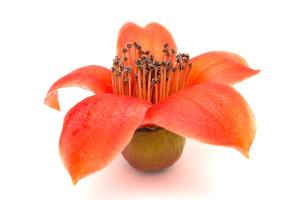Can You Plant Bunching Onions After Tomatoes?
Tomatoes and bunching onions are a couple of popular vegetable crops that most gardeners enjoy cultivating. They have different growing requirements, but what happens when you want to plant bunching onions after tomatoes? Can you? Yes, you can. However, you need to consider a couple of factors to ensure success.
Factors to Consider Before Planting Bunching Onions After Tomatoes
Before planting bunching onions after tomatoes, you need to evaluate the soil conditions. Tomatoes are heavy feeders that deplete soil nutrients, including nitrogen, phosphorus, and potassium. Therefore, you need to replenish the soil by adding fertilizer, organic matter, or cover crops before planting bunching onions.
You also need to consider the timing. Most tomatoes are annuals that start producing fruit in mid-summer and die back in the fall. Bunching onions, on the other hand, are biennials that require two years to complete their life cycle. Therefore, if you plant them late in the season, they might not have enough time to mature before winter. It's best to plant them as soon as the tomato season ends or in the spring if you had late-season tomatoes.
How to Plant Bunching Onions After Tomatoes
The first step when planting bunching onions after tomatoes is to prepare the soil. You can test the soil pH to determine whether it's within the range of 6.0 to 7.0, which is ideal for bunching onions. You can also add compost or aged manure to improve soil fertility and drainage.
Once the soil is ready, you can plant the onions by direct-seeding or transplanting. To direct seed, make shallow furrows and space the seeds about 1 inch apart. Cover the seeds with soil and keep the soil moist until germination, which can take 7 to 10 days. Once the seedlings emerge, you can thin them to about 3 inches apart.
To transplant, you can start the onion seeds indoors about six weeks before the last frost date. When the seedlings grow to about 3 inches tall, you can transplant them to the garden bed, spacing them about 4 to 6 inches apart. Ensure the soil is moist and the roots are well-established before transplanting to reduce shock.
Caring for Bunching Onions After Planting
After planting, you need to care for the bunching onions to ensure they grow healthily. Bunching onions require consistent moisture to promote even growth and prevent bolting. Therefore, you need to water them regularly, especially during dry spells.
You can also add mulch around the onions to conserve moisture, suppress weeds, and regulate soil temperature. However, avoid mulching too close to the onion stems, as this can promote rotting.
Bunching onions also benefit from regular feeding, especially during active growth phases. You can apply a balanced fertilizer or top-dress with compost every four to six weeks. However, avoid over-fertilizing, as this can cause the onions to develop thick necks and become too pungent.
In Conclusion
Planting bunching onions after tomatoes is possible, but you need to ensure the soil is well-prepared, the timing is right, and you care for the onions properly. With proper planning and execution, you can enjoy a bountiful harvest of tomatoes and bunching onions from your garden.

 how many times do yo...
how many times do yo... how many planted tre...
how many planted tre... how many pine trees ...
how many pine trees ... how many pecan trees...
how many pecan trees... how many plants comp...
how many plants comp... how many plants can ...
how many plants can ... how many plants and ...
how many plants and ... how many pepper plan...
how many pepper plan...





























